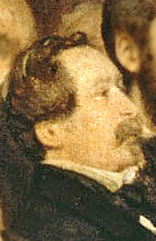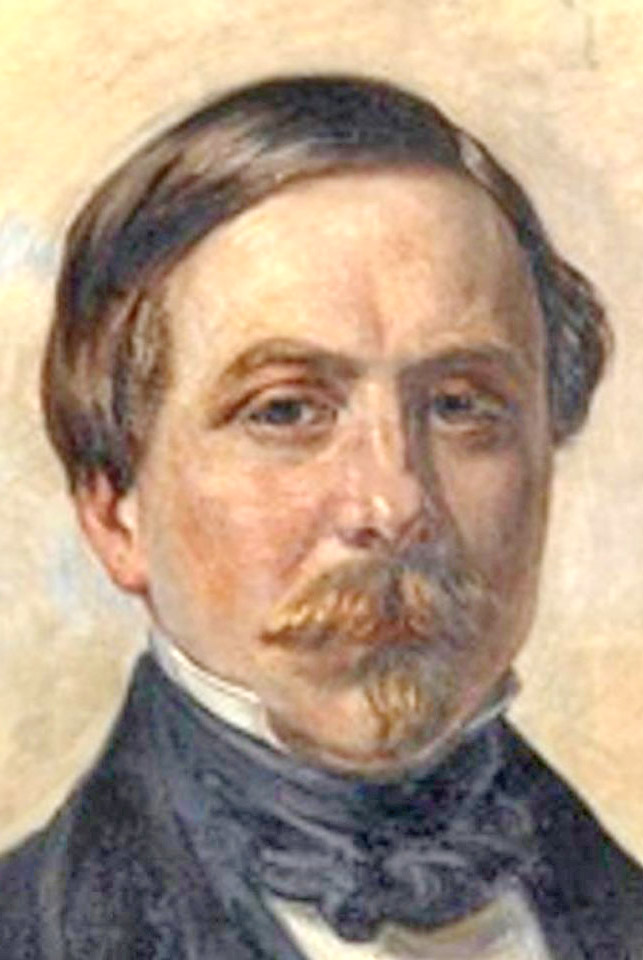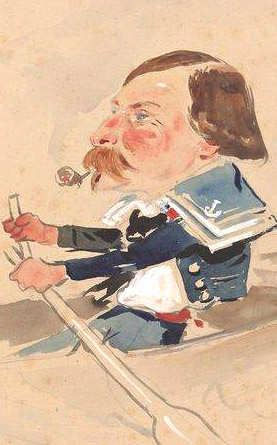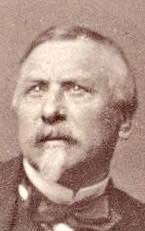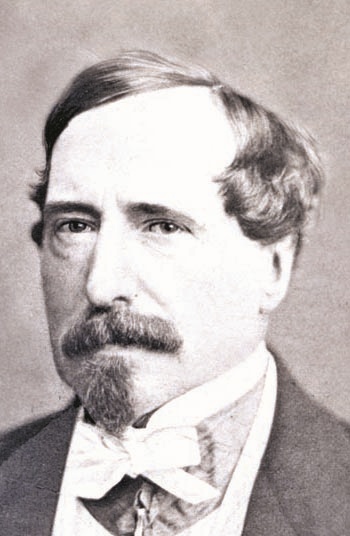Antoine-Léon Morel-Fatio (1810 – 1871), painter, conservator
1st image: Soirée; 2nd: Barcet (1915), based on earlier image; 3rd: Giraud (1851); 4th: Dallemagne (c.1865); 5th: Alternative: Lord Hertford (see note below).
Marine painter Léon Morel-Fatio frequently attended de Nieuwerkerke16 soirées, and caricaturist Eugène Giraud11 appropriately depicted him in a boat on March 14, 1851. His name appears in Dayot’s gravure (1900) at this location, and the available images have a proper match. The gloved Morel-Fatio is in discussion with painter Rousseau64 and conservator Reiset65.
Note: Although Morel-Fatio is confirmed in Une Soirée au Louvre, there is also a good match with art collector Richard Seymour-Conway, 4th Marquess of Hertford. Lord Hertford frequently attended the vendredi-soirées, and conducted several purchases with de Nieuwerkerke. His Wallace-collection is renowned. I may add his profile at a later point in time.
Considered “wise and correct” by his director Viel-Castel43, Morel-Fatio attended in his role as deputy-conservator of the Louvre Marine Museum.
The Morel-Fatio family (Morel from St. Saphorin, Fatio from Vevey), emigrated from Vaud, Switzerland, to France in 1809 and gained wealth as bankers and vegetable conservators. In 1852, Léon’s brother invented a new process to conserve peas, maintaining flavor and appearance. It was adopted by the French military during the Crimean War.
Léon evaded a business education by traveling to England, Algeria, and Italy while studying painting. Traveling to North-Africa was popular: marine painter Eugène Isabey75 made a similar trip at the same time. Morel-Fatio’s Algerian-themed works, tied to French naval activities, found success at the 1833 and subsequent Salons. His 1843 marriage to Louise, daughter of General Baron Duchastel, bolstered his career. King Louis-Philippe invited him to sketch Queen Victoria’s arrival at Tréport, and was so pleased with it that he offered him and his wife, as wedding present, to join Vernet31 on a journey to Algeria to create complementary seascapes.
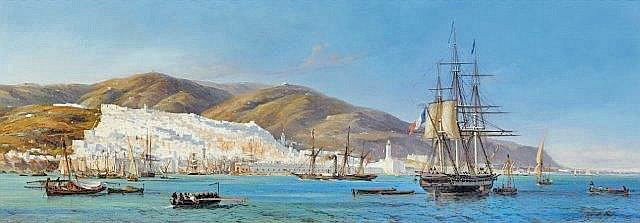
Morel-Fatio’s 1846 nomination as Chevalier for the Legion d’Honneur was met with criticism. The Journal des Artistes writes:
“But why in the nomination of Mr. Morel-Fatio do we see no other title to this distinction than the quality of husband of the daughter of a general attached to Louis-Philippe? “
Morel-Fatio’s reputation flourished under Louis-Napoleon, who enlisted him and de Nieuwerkerke on a 10-day trip to Cherbourg (1850) to depict naval exercises.
In 1853, he became Peintre de Marine, and depicted naval battles in the Crimean War and Bomarsund in 1854, where he must have met Admiral Parseval02a. His position as interim director of the Louvre Marine Museum became official in 1857.
Besides travels to the Orient, Morel-Fatio had become politically active in Charonne, where his wife Louise directed the post office (since 1854). As mayor, he facilitated Charonne’s incorporation into Paris (1859) where it now is part of the 20th district.
Sadly, Léon Morel-Fatio is one of eight people in Une Soirée au Louvre that died during the Franco-Prussian war. In March 1871, he suffered a heart attack in the gardens of his naval museum when he saw the enemy nearing the Louvre. The guardsmen found his body hours later.
